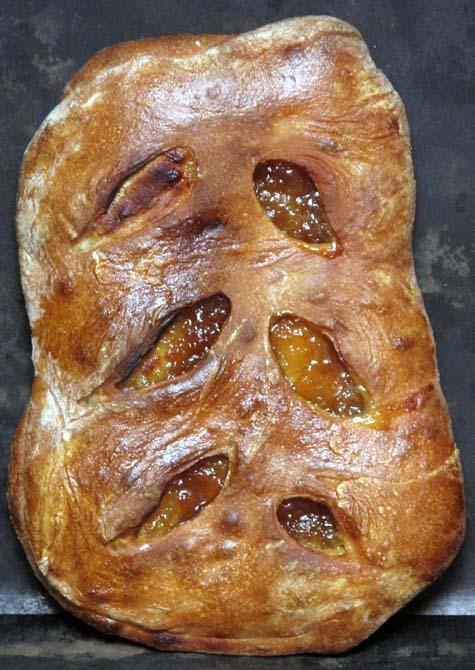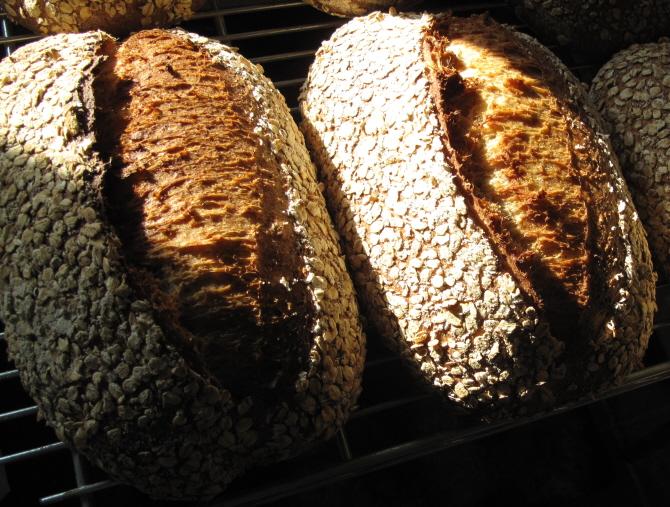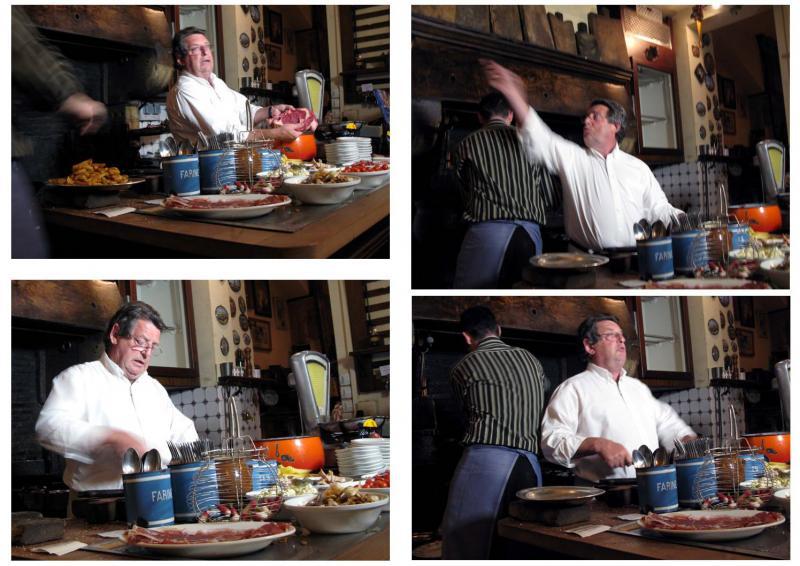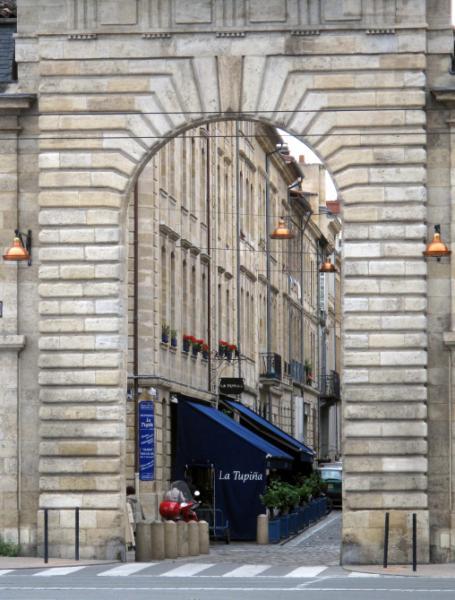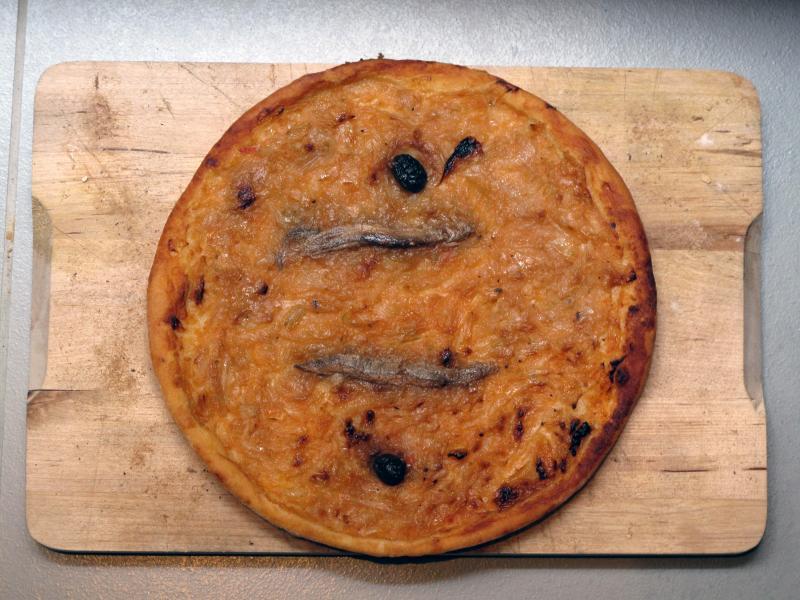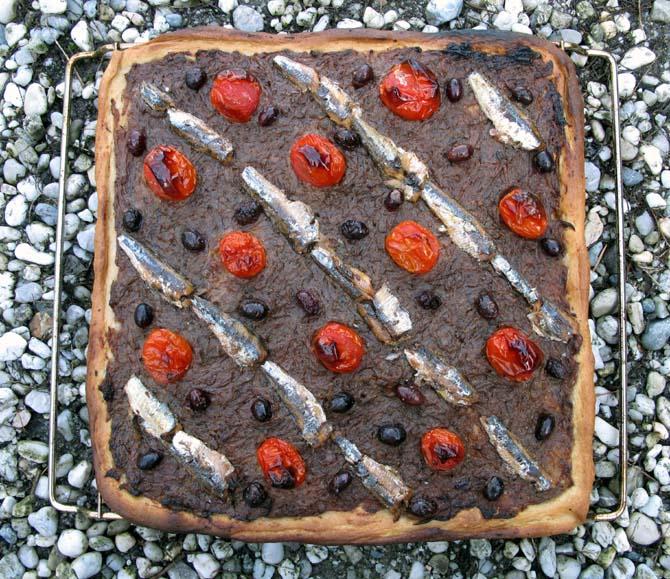
bethesdabakers
participating member-
Posts
239 -
Joined
-
Last visited
Content Type
Profiles
Forums
Store
Help Articles
Everything posted by bethesdabakers
-
Your choice ... Mick
-
It goes without saying that it's up to you how you make your own bread. But why add unnecessary stuff to dough? Give your dough a rest to relax the gluten, use a lower gluten flour, increase the hydration of the dough. I think a few hamburger buns have been made without the need for additives. Mick
-
You can freeze starter but there's really no point. Couple of years ago we went to France for three months. I took some wheat and rye starter with us for use over there (when you get down to it the bread situation in France might even be worse that in the UK)and as an experiment put a small amount of both starters in the fridge and the freezer. The starters we took came back as refreshed (sorry) as we were. The refrigerated starters bounced back with one refreshment, the frozen ones took another 24 hours. Mick
-
"The Italian Baker" by Carol Field - the new edition
bethesdabakers replied to a topic in Cookbooks & References
The original version had weights and cups for all ingredients except liquids which were given as cups and made it very confusing for someone from the UK. I just downloaded a kindle version of the new edition and have only glanced through it. Weights and volume are used throughout. The sad thing is she gives a Biga & a Biga Naturale both of which are yeasted. She repeats the old story of how complicated and time consuming making and maintaining a starter is. If someone is serious enough to fork out the money for a bread book like this they must be a serious enough baker to use a starter. Pane Genzano is still given as a yeasted recipe. That said, I'm used to converting formulas to natural leaven and I'm sure I will get useful ideas from the book. Mick -
Dearie me - I think I have a bit of homework to do. Thanks for that link. Mick
-
Thanks you for your contributions. I'm no food historian but I've never heard of steamed bread in the UK. There is no cornmeal in the recipe - that's about the only difference. Be interested to hear from someone with some historical knowledge. Mick
-
I’m putting together a little series of Welsh breads. I’m not looking for “authenticity” – there don’t seem to be many sources of authentic recipes. I’m just taking what there is and if it’s yeasted, converting it to sourdough, if it’s cooked in a cast iron pot trying out versions that can be made in an oven, trying to work with local flours. Anyway, I’m reading Bobby Freeman’s “First Catch Your Peacock” and she gives a recipe for Steamed Brown Bread from Caernarfonshire, now part of Gwynedd where I live, which she says comes from “Farmhouse Fare” 1966 edition, a compilation of recipes from Farmers Weekly magazine. She says it was baked in stone marmalade jars which made me think of Boston Brown Bread being baked in coffee tins. So I dig out a recipe for Boston Brown Bread and …. the recipes are identical. At first I think, “Wow, Boston Brown Bread must have come from this traditional Welsh recipe!”. But then I think, someone sent this recipe to a farmers’ periodical in 1966. Did they just happen to have an American recipe that they thought other people might like to make? Can anyone cast light on the origins of Boston Brown Bread or about Welsh Steamed Brown Bread?
-
Hey Lizz Didn't you forget the sugar and oil - always good for kicks & giggles!!! Mick
-
You need to talk to someone who understands gas convection ovens (i.e. not me). But are you sure that the sign doesn't refer to the extract fan? Modern commercial gas ovens automatically cut out if the extract isn't working because of the danger of fumes. Mick
-
You can check out the recipes in his weekly Guardian article here. I love his stuff. Mick
-
Here's an odd one (to my mind) - Pear & Liquorice Fougasse: Came from “Les Meilleures Fougasses” by Benoit Molin. Basically it's a sweet bread dough (which I converted to sourdough for my purposes) which contains liquorice, rolled out. One half of the dough is spread with lemon curd, covered with a layer of a pear jam (pear, cider, sugar, liquorice). The uncovered half is folded over the pear jam, and the slashes just go through the top layer. M. Molin called for liquorice powder + a commercial product made by Haribo, the large european sweet manufacturer. I just use powdered liquorice from a Chinese supermarket. More photos here. Mick
-
Producing that gaping split along the centre of a loaf looks most effective when the type of bread is going to show a great contrast between the grigne and the rest of the crust as in this picture of oat & honey: I usually use a scalloped bread knife for this. Make a bold slash in a straight line slightly off centre with the blade held at an angle of about 45 degrees towards the centre of the dough. Mick
-
Quick word on the Harkers. I love it as a pub especially in the quiet of the afternoon. It's very well stocked and shows no sign of being part of a large commercial chain. It's also half way between my bit of North Wales (Bethesda/Bangor) and the rest of the world and only five minutes from Chester Rail Station. So for the third year in a row I had my birthday celebration there last Saturday - excellent, tolerant staff. But I'm not so sure food-wise and less so since I asked if I could have a burger as pink as they were allowed to serve it. I was told it couldn't be rarer than it was because burgers came in pre-cooked. Mick Hartley (no relation)
-
If I had one night in Bordeaux, and I wish I did, the choice would be between the tradition of La Tupina or the more modern approach of La Cape. La Cape is across the river in Cenon and the easiest way to get there is on the tram, Line A. Get off at La Morlette, turn right (90 degrees) to the direction of the tram and cut through an unlikely gap by the side of a service station and a supermarket. This brings you out directly opposite the restaurant. If I went to La Cape I would not be able to get past the degustation menu with the selected wines at (I think) 85€. Trouble is I would probably be weak and opt for the fireside cooking of La Tupina and, try as I might to go for the pork or the beef, I would probably fixate on the poulet roti turning on the spit over the fire. Chef Jean-Pierre Xiradakis doing his thing for the television cameras I would also find time to scour the cookery section of Mollat, one of the great independent bookshops.
-
Might be out of season but you never know what’s lurking at the back of the freezer. Favourite recipe has to be Jane Grigson’s Faison a la Normande from a battered old Sainsbury Cookbook The Cooking of Normandy. It roughly goes: Peel and core a couple of apples and slice in wedges. Half cook them in butter with a sprinkling of cinnamon. Place in the bottom of a casserole. Brown the bird(s) then flame in calvados. Place breast side down on the apple. Deglaze the pan with cider and pour over the pheasant. Cover and place in the oven at 200C for 20 minutes. Turn the birds over and return to the oven for a further 20-25 minutes. Remove the birds and keep warm. Sieve the juices and reduce. Bring crème fraiche to the boil and stir into the reduced sauce. Reduce again until about the consistency of apple sauce. Whisk in some butter. While this is going on, peel another couple of apples and cook very gently in butter and cinnamon. Place decoratively on a serving dish, carve the pheasant and arrange on the dish, pouring some of the sauce over and serving the remainder separately in a jug. A New Year’s Eve special.
-
Cooking with Paula Wolfert's Mediterranean Clay Pot Cooking
bethesdabakers replied to a topic in Cooking
Just realised I had a photo of the pissaladiere bought from the boys on the Rue Droite in Nice last year. A bit spartan compared with the version in the book. Best wishes, Mick -
Cooking with Paula Wolfert's Mediterranean Clay Pot Cooking
bethesdabakers replied to a topic in Cooking
Hi Paula Sorry it’s taken so long to get back to you. I did do the pissaladiere recipe and it was excellent. Photos and report at http://thepartisanbaker.wordpress.com/2010/03/22/paula-wolferts-pissaladiere/ When I read your recipe it sounded very up-market compared with what I had previously come across both in Nice and in other cookery books (not that they were in any way specialist). I found these rather snotty notes from when we were in Nice in 2004 celebrating our silver wedding: “Chez Theresa has an open shop-front through which you can see a wood burning oven which is very much in operation. Theresa is self-styled Queen of Pissaladiere which she sells from a stall in the nearby market and two guys, from whom we bought a slice, produce the pissaladiere in the Rue Droite shop. It was interesting in as much as they sold it cold, the crust was light and bready but thicker than I expected (about half a centimetre), the onion topping was virtually a puree, and, instead of the close lattice-work of anchovies and olives usually seen in pictures, they took a totally minimalist approach with just the odd anchovy fillet here and the occasional olive there. “ We were there again last May for a week. No sign of Theresa on the market but the guys on the Rue Droite now had a large Labrador sitting on a high bar stool outside the open shop window. They deliver take-away pissaladiere round the old town on an ancient moped with a bizarre home-made trailer. What I didn’t understand was the logic of the thickness of the topping. Why should it be thicker for pastry than bread dough and how the hell would you measure it? I’m afraid this little studio in Arcachon is a totally ceramic free environment (unless you count Pirex) but the pissaladiere stiil came out great. Mick -
Cooking with Paula Wolfert's Mediterranean Clay Pot Cooking
bethesdabakers replied to a topic in Cooking
Paula That's fantastically kind of you. Can I come back to you with a couple of questions about the origins of the recipe in a day or so? (off to La Tupina in Bordeaux for lunch tomorrow!!!) Best wishes, Mick -
Cooking with Paula Wolfert's Mediterranean Clay Pot Cooking
bethesdabakers replied to a topic in Cooking
I’d be grateful if someone could give me a bit of help. For the past two years I’ve been baking bread for sale from home and everything else has gone by the board. I’m now in South West France for several weeks with time to try out all the things I put to one side. One of these was the pissaladiere from Paula’s clay pot book but the book is by the side of the bed back in Wales and I’m here in France. Would someone by kind enough to remind me what the main points of her version are some of which I hadn’t come across before. I remember that the onion is stewed the day before and some of the juices used in the dough and also that cherry tomatoes are included in the topping. I don’t want the exact recipe because I’m going to do a sourdough base, but what else might I have forgotten? Best wishes Mick -
I’m only really interested in the practicalities of starters’ i.e. do they work. This is my experience: At present I have two starters, one plain wheat flour and the other rye. The wheat leaven I started in late 1999 – just a straightforward mix of white bread flour and water. It probably came out of Joe Ortiz Village Baker but it certainly started life as a very stiff dough and I wasn’t happy with it. Some months later I read The Oven Builders and raised the hydration to 100% á la Dan Wing and this seemed to solve my problems. For several years I used the fridge method, storing the starter in the fridge, removing it 24hrs before mixing and refreshing it twice during that time first at a ratio of 1 starter: 2 water: 2 flour, second 1:1:1 (by weight). Over two years ago I started small scale commercial sourdough baking two days a week from home knocking out anything up to 150 loaves over the two days. Since this time the starter has lived at room temperature without any noticeable change. It’s usually refreshed every 24hrs (12 before baking) but is often neglected. About 200g have been sitting on the counter unrefreshed since Friday (now Sunday a.m.) but I have no doubt that that I can turn this into 6-9K of active leaven when I come to mix on Wednesday evening. During its life it has been on holiday to France several times, once for as long as two months – seems to like it there (me too). The rye starter is much older. It came from Andrew Whitley (Village Bakery/Bread Matters) 10 years ago. But he got it from a Russian bakery who were supposed to have been using it for over 100 years. Since I’ve had it it’s experienced the same sort of life as the white starter. So both starters have been around for some time and have experienced quite big changes in circumstances. I can’t say I have noticed major changes in the way they perform. People seem to want starters to be shrouded in mystery. But, they are just fermenting mixtures of flour and water, and, if they raise the dough, what more do you want? It would be really good if sourdough stopped being regarded as “difficult” because it’s not. It’s totally straightforward when you have a little confidence. Then, perhaps, a little refinement can be developed. Mick
-
Well you can eat at La Tupina weekday lunchtime for 16€. That's where I'd be. Mick
-
bakery-hopping in london
bethesdabakers replied to a topic in United Kingdom & Ireland: Cooking & Baking
Have a look at the "Best List" on Dan Lepard's site here and post a message on the forum for more information. Best wishes, Mick -
Welsh Assembly Government? Mick
-
And to deviate still further (if you'll pardon the expression), last time we stayed in Paris, from the list of period-style hotel rooms we chose the one which was translated as being "full of antics". Just the place for an aniversary weekend we thought. Mick
-
No one's mentioned the related problem of the common French hand written menu - the rather florid hand writing being difficult for at least these Brit eyes. My favourite confusion was something like "Turbot grille aux beure entre deux pers" which I took to mean that the dish was for two people. Actually, of course is said "entre deux de mers". Dummy. Mick

